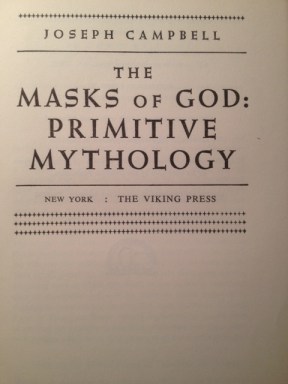Vintery, mintery, cutery, corn,
Apple seed and apple thorn;
Wire, briar, limber lock,
Three geese in a flock.
One flew east,
And one flew west,
And one flew over the cuckoo’s nest.
A recent story about teeth grown from stem cells that were extracted from urine reminded me, in the odd ways that brains make associations, of One Flew Over The Cuckoo’s Nest. I first read Ken Kesey’s novel in the mid-1970s when I was majoring in anthropological folklore at Brooklyn College, a wannabe Joseph Campbell. Kesey’s novel, viewed through my newfound mythological lens, was ripe with primal imagery and mythological motifs . A decade and a career later, I came across a case report in the British Journal of Obstetrics and Gynaecology of a rare congenital anomaly and in a flash my worlds of mythology and genetic counseling merged. And it all starts with a vagina, or more precisely, a toothed vagina.




Three near universal figures in folklore are Trickster, Hero, and the Vagina Dentata. Trickster takes on many shapes and forms and plays different roles in different cultures. A common story involves Trickster disobeying the social rules to upset cultural norms. One could make the case that Bugs Bunny is the culturally distorted Looney Tunes descendant of Trickster Rabbit. Hero is often the Founding Father or Savior of a culture who must overcome a great obstacle or defeat a horrible monster, not uncommonly with the help of Trickster. The Vagina Dentata figure is a female beast – sometimes called The Terrible Mother – who is endowed with a toothed vagina with which she emasculates and controls men.
As you might guess, the vagina dentata figure is a frequent target of psychoanalytic theory and feminist critiques. Clearly this goes deep into Freudian territory. Some view it as the mythological re-telling of the conflict between patriarchal and matriarchal societies. Females are portrayed as monsters because the story is told by male victors.
Set in what was then called an asylum for the insane in Oregon, the plot centers on Randle Patrick McMurphy (better known to many of us as Jack Nicholson), Chief Bromden, and Nurse Ratched, the three geese of the rhyme’s flock. McMurphy/Trickster wreaks havoc by commandeering boats and buses, and generally irritating Nurse Ratched by flaunting her rules that give her absolute control of the inmates. As Nurse Ratched describes McMurphy to a co-worker: Sometimes a manipulator’s own ends are simply the actual disruption of the ward for the sake of disruption.
Chief Bromden is Hero, a big man whose large size is a phallic symbol and inability to speak is a manifestation of his impotence and domination by Nurse Ratched.
Nurse Ratched is the Vagina Dentata. A ratchet wheel is a toothed wheel (okay, the spellings aren’t exactly the same, but give Kesey some literary license here) and cuckoo’s nest is an old slang term  for vagina. Chief describes Nurse Ratched’s monster-like qualities:
for vagina. Chief describes Nurse Ratched’s monster-like qualities:
She’s going to tear [them] limb from limb, she’s so furious. She’s swelling up, swells till her back’s splitting out of the white uniform and she’s let her arms section out long enough to wrap around the three of them five, six times. She looks around her with a swivel of her huge head…and she blows up bigger and bigger, big as a tractor….
Later, McMurphy discusses Ratched with another inmate:
Inmate: She’s not some kind of giant monster… bent on sadistically pecking out our eyes.
McMurphy: No, buddy, not that. She ain’t peckin’ at your eyes. That’s not what she’s peckin’ at.
Inmate: Not our eyes? Pray then, where is Miss Ratched pecking, my friend?
McMurphy: At your balls, buddy, at your everlovin’ balls.
With his slyness and fondness for breaking rules, McMurphy gains Chief’s trust by sharing a pack of gum and gets him speaking again , symbolically restoring Chief’s phallic potency.
Later in the novel, McMurphy recruits some prostitutes to help release the sexual repression of the stuttering Billy Bibbit. Nurse Ratched discovers the shenanigans and humiliates Billy by threatening to tell his mother. Subsequently, the shamed Billy commits suicide for which McMurphy blames Nurse Ratched. Enraged, McMurphy chokes Ratched and ripped her uniform all the way down the front, screaming again when the two nippled circles started from her chest and swelled out and out, bigger than anybody had ever imagined, warm and pink in the light...
McMurphy’s punishment for the assault is lobotomy, the symbolic equivalent of castration for Trickster whose power lies in his wits. Chief, his vitality restored by McMurphy, smothers the lobotomized McMurphy (a half century before Oregon passed its Death With Dignity law), rips a control box off the floor, smashes a window, and escapes to freedom, Hero resurrected.
Of course, this is only one of many ways of reading the novel. Did Kesey have mythological motifs in mind when he formulated the novel? That’s unknowable, but if folklorists are right, mythology is always on our minds. The tales that emerge from writers and storytellers tap into deep subconscious wells. The sexual and power conflicts within our minds and our society play out in our stories; we can’t help but tell these tales.
It is not surprising that congenital anomalies and genetic disorders can play mythological and religious roles that range from sacred to profane. Congenital alterations of the flesh may be transformed into hero or beast. It’s hard to say if an actual toothed vagina is the source of the mythological figure, but even the rarest encounter (although ovarian dermoid cysts not uncommonly contain teeth) with this anomaly would likely have left a deep and lasting impression. As Chief says, “It’s truth even if it didn’t happen.”


